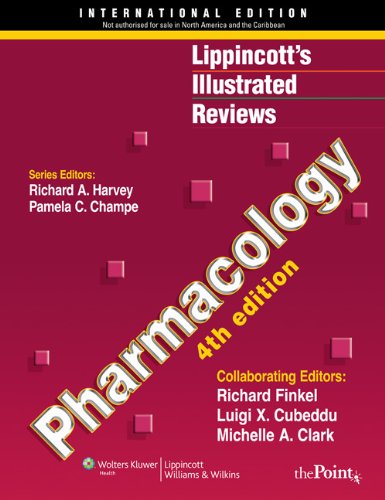Test Bank For Pharmacology 3rd Edition By Richard D
Original price was: $55.00.$20.00Current price is: $20.00.
Test banks are important tools for students studying for exams. They provide a comprehensive overview of the material covered in a textbook, and they offer practice questions that can help students gauge their understanding of the material. The Test Bank For Pharmacology 3rd Edition By Richard D is an excellent resource for students taking pharmacology exams.
The test bank includes a wealth of information on the various drugs covered in the textbook, and it offers practice questions that can help students prepare for their exams. In addition, the Test Bank For Pharmacology 3rd Edition By Richard D provides answer keys to the practice questions, making it an invaluable resource for students preparing for pharmacology exams.
Digital item No Waiting Time Instant Download
ISBN 139781605472003 ISBN 10160547200X
Description
Test Bank For Pharmacology 3rd Edition By Richard D
Fulcher: Pharmacology, 3rd Edition
Chapter 02: Basics of Pharmacology
MULTIPLE CHOICE
1. Component(s) of medications include all of the following EXCEPT
a.
active chemical ingredient
b.
inactive medicinal ingredient
c.
inert ingredients
d.
flavorings
e.
preservatives
ANS: B REF: 22
2. Drugs may be found from all of the following sources EXCEPT
a.
plants
b.
minerals
c.
gene splicing
d.
gums
e.
air
ANS: E REF: 23
3. Factors concerning drug absorption that are important in patient teaching are
a.
maintaining the proper acidity of the stomach for absorption
b.
whether food is present in the stomach or not
c.
formula and milk products with the infant and small child
d.
all of the above
e.
a and b
ANS: D REF: 25-27
4. Factors concerned with percutaneous absorption include the
a.
length of time the medication is in contact with the skin
b.
moisture level of the skin
c.
depth of respirations
d.
blood supply to the area
e.
all of the above
ANS: E REF: 25-26
5. The amount of drug circulating in the body is called the drug’s
a.
half-life
b.
distribution rate
c.
blood level
d.
accumulation point
ANS: C REF: 27
6. Drug distribution is affected by
a.
the blood-brain barrier
b.
the lipid solubility of the drug
c.
the protein binding of the drug
d.
placental barriers
e.
all of the above
ANS: E REF: 27
7. Metabolism is
a.
also called biotransformation where the drug is detoxified
b.
a series of reactions to chemically change the medication
c.
necessary to prevent eventual harm to the person
d.
all of the above
e.
a and c
ANS: D REF: 27
8. Which of the following is NOT necessary in patient teaching concerning the excretion of medications?
a.
Exercise has no effect on the excretion of medications.
b.
Increased fluid intake assists with the excretion of drugs.
c.
A poor diet slows the excretion of medications.
d.
Laxatives may increase the excretion of medications.
e.
Pregnant and nursing mothers should discuss any medications, including OTC drugs, with their physician before taking.
ANS: A REF: 27
9. Which of the following are considered the major drug actions?
a.
depression, stimulation, irritation, demulcence
b.
depression, stimulation, demulcence
c.
depression, stimulation, irritation
d.
depression and stimulation
e.
stimulation
ANS: A REF: 29
10. Absorption rates of oral medications from fastest to slowest are
a.
liquids, capsules, coated tablets, tablets
b.
capsules, tablets, suspensions, liquids
c.
liquids, capsules, suspensions, tablets
d.
liquids, suspensions, capsules, tablets
ANS: D REF: 25
11. All of the following are true about pharmacotherapeutics EXCEPT drugs are used to
a.
cure a disease
b.
diagnose a disease
c.
prevent diseases
d.
always produce the desired effects
e.
decrease symptoms of diseases
ANS: D REF: 29
12. Adverse reactions should be charted in
a.
red ink
b.
black ink
c.
an obvious place on the patient record
d.
a and c
e.
b and c
ANS: D REF: 30
13. Drug interactions may occur in the form of _____ interactions.
a.
drug-drug
b.
nutrient-drug
c.
disease drug
d.
a and c
e.
a, b, and c
ANS: E REF: 32
14. Which of the following statements are true about medications?
1. Drugs are aids in maintaining the highest degree of homeostasis following a decline in optimal body function.
2. Drugs are dangerous when used unwisely and with unnecessary dependence.
3. Drugs may cause irreversible harm if used unwisely.
4. Mental states of the patient do not influence the use of medications.
a.
1, 2, 4
b.
1, 3, 4
c.
2, 3, 4
d.
1, 2, 3
ANS: D REF: 22





Be the first to review “Test Bank For Pharmacology 3rd Edition By Richard D”